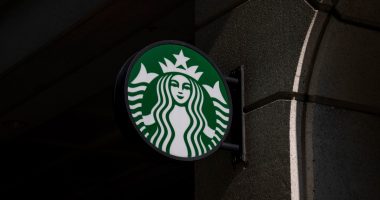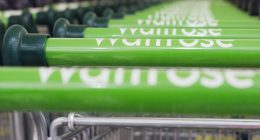A Three-Bedroom Former Salvation Army Hall in Sydney
$2.9 MILLION (4 MILLION AUSTRALIAN DOLLARS)
This three-bedroom home is in Leichhardt, a dense suburb about three miles from the central business district of Sydney, Australia. Built in 1916, the building was originally a Salvation Army hall. The current owners converted the property in about 1997, taking care to retain its original facade and interior details out of respect for its long history in the neighborhood, said Ben Southwell, a sales agent with Cobden & Hayson, which has the listing.
“They didn’t want to chip away at the fabric that had been laid down in the area,” Mr. Southwell said. “Even after they moved in, people were still dropping off donations under the door for a while.”
The 2,874-square-foot home, on about a tenth of an acre, does not have the lengthy list of amenities typically found in properties at this price point. Rather, Mr. Southwell said, “you’re paying for the nostalgia of the home and the uniqueness. There’s just not another one down the road.”
The front entrance, beneath the original Salvation Army sign, opens to the main hall, which serves as a combined living, dining and office space. The 20-foot, ornamental plaster ceilings are original to the hall. The owners covered the floors with engineered American oak.

The kitchen, across the back of the hall, sits on what used to be the stage, and is elevated over the living area, Mr. Southwell said. A long, granite-topped island has seating for four. Hanging above is an antique sled that now serves as a pot rack. A commercial-grade gas range and a double refrigerator are on the back wall.
Two sets of French doors on one side of the hall open onto the garden courtyard, which has a wood deck, stone terrace, fish pond, and a built-in gas barbecue. The garden is also reachable through a pair of iron gates fronting the street.
A wing added behind the hall has a lower-level main suite and two bedrooms above. The main suite includes a large bathroom with radiant heat beneath porcelain flooring, a double vanity with two vessel sinks, a walk-in shower and a round soaking tub. The adjoining office space, which can be opened to the courtyard, could be converted to a fourth bedroom, Mr. Southwell said.
Two upper-level bedrooms, one of which has a small balcony overlooking the courtyard, share a large bathroom.
The property occupies a corner lot on Carlisle Street, a block from Norton Street, the retail center and restaurant row of Leichhardt, Mr. Southwell said. The suburb, about eight miles inland from Australia’s southeast coast, has strong Italian roots dating to the late 1800s, and was long known for its authentic Italian cuisine. While the restaurant offerings are now more diverse, the annual Norton Street Italian Festa continues to celebrate the area’s Italian heritage every October.
Leichhardt is less than 15 minutes from Sydney’s central business district and about 25 minutes from Sydney Kingsford Smith Airport, depending on the time of day.
Market Overview
The housing market in greater Sydney — the capital of New South Wales and Australia’s largest metro area, with about 5.3 million residents — was “in a state of increasing positive momentum,” said Louis Christopher, the managing director at SQM Research, a Sydney-based investment research house. “Prices were rising at an annual rate of 7 to 9 percent.”
That momentum, which followed a couple of years of sagging prices nationally, came to a halt with the pandemic. In the second quarter of 2020, seven of Australia’s eight state capitals saw a drop in residential property prices, according to the Australian Bureau of Statistics, with Melbourne (-2.3 percent) and Sydney (-2.2 percent) registering the biggest decreases. Prices, however, were still 6.2 percent higher year over year.
In Sydney, some centrally located properties saw value declines of 8 to 10 percent, as buyers’ tastes shifted to less dense areas, Mr. Southwell said. However, since the Australian government began loosening Covid-19 restrictions in May, prices in Sydney have begun to rise again, if slightly, by 0.3 to 0.7 percent, he said.
A two-bedroom apartment in Sydney’s central business district that would have sold for about 1.4 million Australian dollars ($1.02 million) before the pandemic now sells for closer to 1.2 million ($876,000), Mr. Christopher said.
At the same time, the rental vacancy rate in Sydney has skyrocketed — as it has in many cities across the globe — according to SQM data. May’s 4 percent rate was more than double the monthly average going back to at least 2005. In the central business district, nearly 12 percent of rentals remain vacant, Mr. Christopher said, with rents falling from an average of 1,000 Australian dollars ($730) a week for a two-bedroom to 710 ($520).
Much of the drop-off in rental activity is because of an exodus of international college students during the pandemic, said Michael Pallier, the managing director of Sydney Sotheby’s International Realty. But sales of high-end properties close to Sydney Harbor have remained strong, the result of both record-low mortgage rates and a wave of interest from expatriates returning home, he said.
Also in keeping with global trends, suburban and rural areas within an hour or two of the city have seen a surge in buyer interest. Mr. Pallier called it “a psychological thing.”
“The first wave after the pandemic was, ‘I’ve got to buy toilet paper.’ Wave two was, ‘I’ve got to get away from a dense population’” he said.
Prices in rural areas “have gone straight through the roof,” Mr. Southwell said. “Agents there have never been so busy. Everything is selling like it’s in the middle of the central business district.”
Australia closed its borders, limited interstate travel and established strict lockdowns early on in the pandemic, actions that appear to have successfully contained the virus. The country’s borders remain closed to all but Australian citizens and residents. On Monday, border restrictions were lifted between New South Wales and neighboring Victoria, which has been the epicenter of Covid-19 cases in Australia and came out of lockdown in late October.
As of Nov. 24, Australia had reported 27,847 cases of Covid-19, and 907 deaths, according to the New York Times’s coronavirus world map.
“We are virtually back to normal now here in Sydney,” Mr. Christopher said. “People are going back to restaurants, with some limits on capacity. But overall, life is mostly back to normal.”
Who Buys in Sydney
Foreign buyers are few this year because of the country’s border closures, agents said. However, demand from expatriates is up, as many have decided to return home amid the pandemic, Mr. Pallier said.
His office is also seeing continued interest from Chinese buyers, as well as buyers from Hong Kong, because of the political unrest there.
“When times are tough, Sydney is in demand,” he said. “It’s a safe haven.”
Buying Basics
Foreign buyers may not purchase an existing dwelling in Australia unless they are temporary residents and plan to use it as their principal residence. They may purchase new dwellings without establishing residency. Any purchase must be approved by the Foreign Investment Review Board.
More than half of all properties in Sydney are sold at auction. Buyers typically have a four- or five-week window to tour a property before it goes to auction. The process makes sense when demand is high, Mr. Pallier said: “If you know you’re going to have a lot of bidders, we will generally auction a property because it’s a good way to get fair value.”
Buyers typically hire a lawyer or conveyancer to handle a transaction. The agent’s commission of 1.5 to 2 percent is paid by the seller.
Websites
Languages and Currency
English; Australian dollars (1 Australian dollar = $0.73)
Taxes and Fees
Stamp duty is due on all property purchases. Rates vary by state, and are graduated according to the sale price. In the state of New South Wales, rates start at 1.25 percent and rise to 7 percent on values above 3 million Australian dollars ($2.2 million). Foreign buyers must pay an additional 8 percent surcharge.
Council taxes on this property are 483 Australian dollars ($353) per quarter.
Contact
Ben Southwell, Cobden & Hayson, 011-61-407-896-212; www.ch.com.au
For weekly email updates on residential real estate news, sign up here. Follow us on Twitter: @nytrealestate.
Source: | This article originally belongs to Nytimes.com








